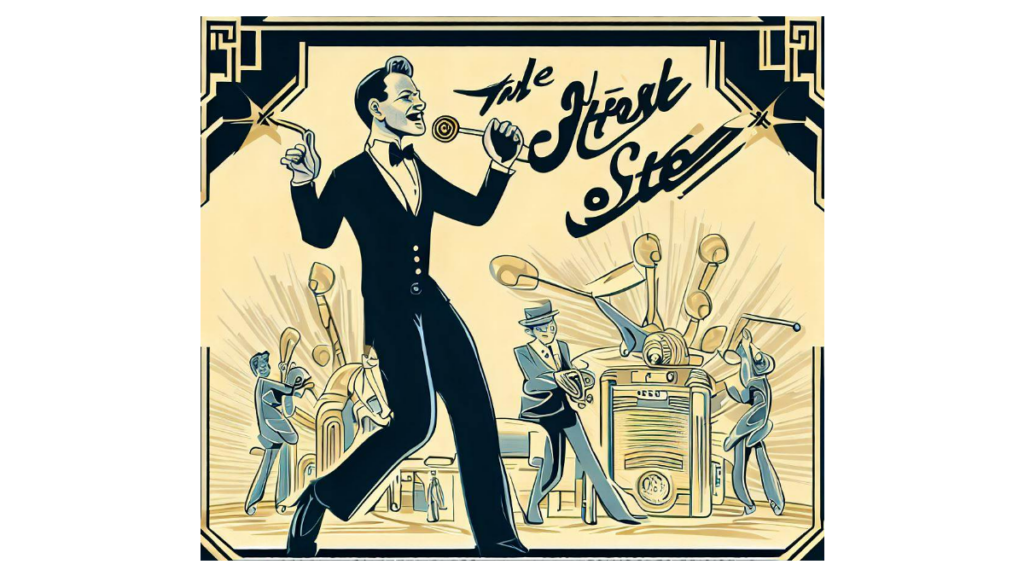
While I consider myself a true record collector, I also never got the memo that vinyl was no longer a viable entertainment medium. In the early 90s, when CDs were suddenly the preferred audio format, I looked upon the technology as an additional way to enjoy music. I certainly didn’t throw away my old records – I just bought more music. Early on I found the sound clarity of a CD very appealing, but there was also a richness missing– an indefinable aural quality that only a vinyl disc could provide. One positive aspect of this new technology was the rush to re-issue classic albums on compact disc. Looking to take advantage of their back catalogues, music labels began releasing popular titles from previous decades. Some of these recordings had never even seen a proper vinyl repressing.
Steppin’ Out: Astaire Sings (released in 1994) was one such re-issue that I snapped up – not knowing much about its origins. While Fred Astaire is mainly celebrated for his elegant dancing, his unique singing style mirrored his graceful moves and is often overlooked when discussing his career. Astaire had a way with phrasing and his keen sense of rhythm gave him an easy, confident way with a song. As a fan of his from watching his old musicals on late night television (especially his classic RKO films with Ginger Rogers) I was immediately drawn to the recording.
Though the tracks presented on the release were rerecorded solo versions of his songs, the idea of Astaire revisiting his classic material was too enticing to pass up. Just a quick glance at the 17 tracks revealed a trove of beloved standards – most which were introduced on celluloid by Astaire himself. “Steppin’ Out with My Baby” from EASTER PARADE (1948), “Let’s Call the Whole Thing Off” from SHALL WE DANCE (1937), and “Top Hat, White Tie and Tails” from TOP HAT (1935) were just a few. These “new” versions of his songs were backed by a strong jazz ensemble and only slightly different from the great originals. It soon became a go-to selection for sophisticated background music – and long car trips that demanded engaging sing-along options.
Little did I know that Steppin’ Out: Astaire Sings was no mere re-issue of a previous album, but a heavily “streamlined” version of a stunning, limited-edition 1952 vinyl box set. It wasn’t until I was given the opportunity to write about the set for our next auction that I discovered the connection. A very ambitious release at the time, The Astaire Story was produced by music icon Norman Granz (the founder of Clef records) for the Mercury label. The recording was overseen by jazz pianist Oscar Peterson and featured an incredible ensemble including Charlie Shavers on trumpet, Flip Phillips on tenor saxophone, and Barney Kessel on guitar. Astaire covered 38 songs from the first half of his career – many written expressly for him by such iconic composers as Irving Berlin, George Gershwin, and Jerome Kern. The sessions were a love letter to Astaire’s early song book and given such respect that in many instances they sounded better than the originals. He also recorded several insightful observations on the songs, which added a nice personal touch to the package.
The design for the four-record set mimicked an oversized photo album and contained several large photographs of the entertainer in the recording studio. The sleeves used to house the discs were also designed to fit inside the album, making the set a truly unique music collectible. The set was limited to 1,384 pieces and each one was inscribed by Astaire and artist David Stone Martin (who created the original artwork). Even for the time, when vinyl albums were still the only vehicle for playing music, it was an ambitious package that few fans were able to obtain. Mercury also released the four LPs separately in addition to nine EPs covering all the tracks. However, the original box set was a true celebration of the beloved entertainer and an ideal addition to any Astaire collection.


Leave a Comment